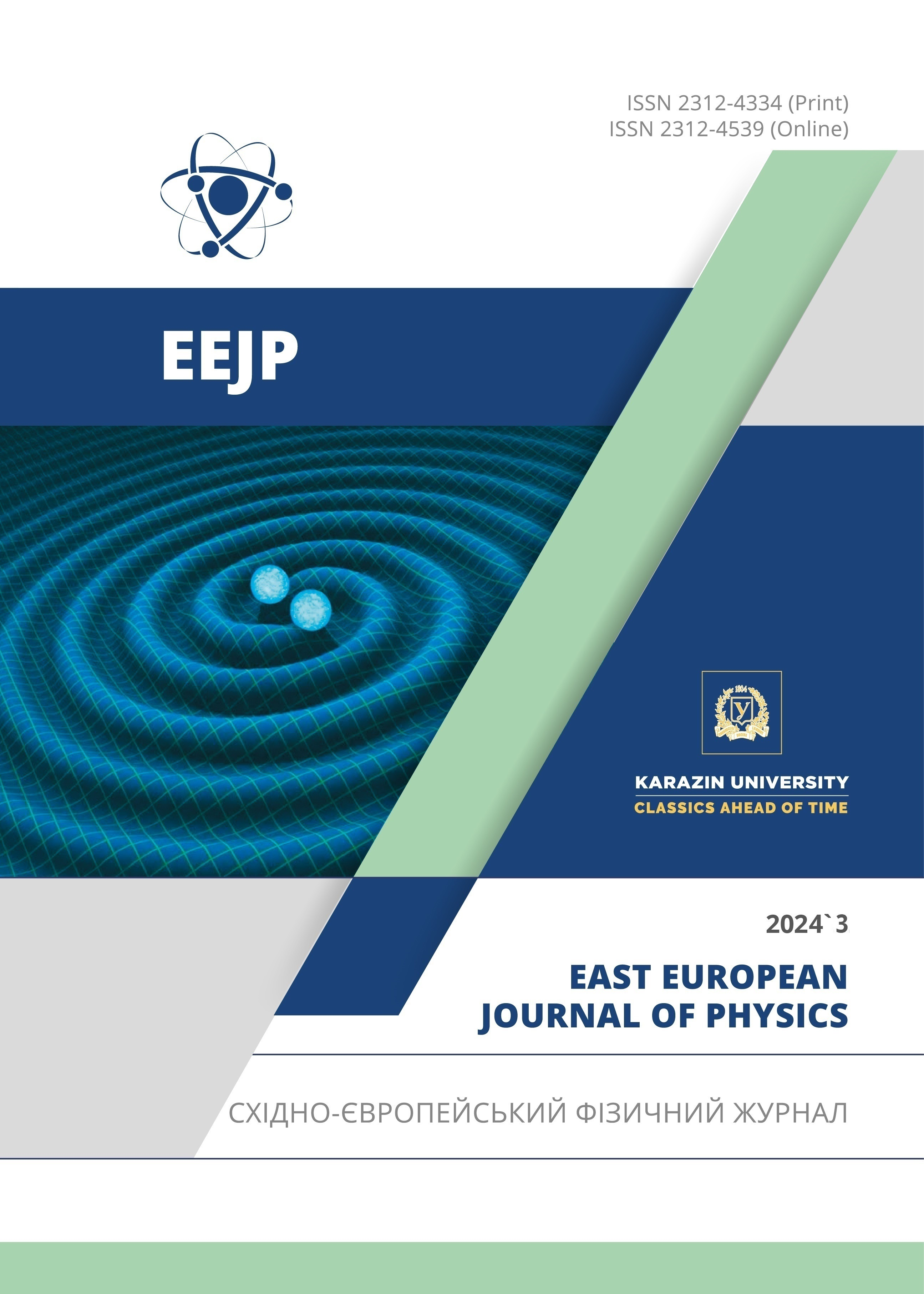Вплив температури, тривалості опромінювання на роботу органічних/RU-DYE/неорганічних сонячних елементів
Анотація
У цьому дослідженні вивчається вплив навколишніх умов на продуктивність сонячних елементів P3HT/Ru-dye/nc-TiO2 (TLSC). Встановлено, що підвищення температури та тривалості опромінення впливає на параметри ТЛСК. При підвищенні температури з 293 К до 393 К густина струму короткого замикання (Jsc) і напруга холостого ходу (Voc) зменшуються з 2,2 до 1,7 мА/см2 і від 0,7 В до 0,5 В відповідно. Це пояснюється впливом високої температури на рекомбінацію фотогенерованих зарядів і зменшення опору шунта (Rsh) у TLSC. Крім того, ми також представляємо вплив тривалості опромінення на продуктивність TLSC. Вимірювання показує, що Jsc зменшився на 0,5 мА/см2, тоді як Voc зменшився на ~ 0,18 В протягом 4800 с освітлення. Це зменшення свідчить про заповнення пасток або дефектів на межі розділу фотогенерованими зарядами. Нарешті, максимальна вихідна потужність TLSC впала майже вдвічі протягом 6 днів під час 20-денного випробування через вплив вологості атмосфери на властивості розділу між барвником/nc-TiO2 і P3HT.
Завантаження
Посилання
R. Gahlot, S. Mir, and N. Dhawan, Energy Fuels. 36, 14554 (2022). https://doi.org/10.1021/acs.energyfuels.2c02847
H. Al-Dmour, S. Al-Trawneh, and S. Al-Taweel, Int. J. Adv. Appl. Sci. 8(6), 1 (2021). https://doi.org/10.21833/ijaas.2021.06.015
K. Sharma, V. Sharma, and S.S. Sharma, Nanoscale research letters, 13, 381 (2018). https://doi.org/10.1186/s11671-018-2760-6
S. Taweel, S.A. ltrawneh, H. Al Dmour, O. Al Gzawat, W. Alhalasah, and M. Mousa, Heliyon, 9, 1 (2023). https://doi.org/10.1002/anie.202302753
K. Altola, G. Gave, M. Markkanen, J. Jaqueline, and P. Lunda, Solar Energy, 237, 264 (2022). https://doi.org/10.1016/j.solener.2022.03.060
H. Al Dmour, and M. Taylor, J. Ovonic. Res. 19, 587 (2023). https://doi.org/10.15251/JOR.2023.195.587
N. Mohenzadehan, A. Nouri, and M. Mohammadi, 25, 3210 (2023). https://doi.org/10.1039/D3CE00126A
A. Sławek, Z. Starowicz, and M. Lipiński, Materials, 14(12), 3295 (2021). https://doi.org/10.3390/ma14123295
E. Chahid, M. Lotfi, and O. Lotfi, IJPEDS, 2, 1772 (2021). http://doi.org/10.11591/ijpeds.v12.i3.pp1772-1783
H. Al Dmour, East Eur. J. Phys, (3), 555 (2023). https://doi.org/10.26565/2312-4334-2023-3-65
A. Pirashanthan, T. Kajana, D. Velauthapillai, Y. Shivatharsiny, S. Bentouba, and P. Ravirajan, Nanomaterials, 12, 820 (2022). https://doi.org/10.3390/nano12050820
L. Shaker, A. Al-Amiery, M. Hanoon, W. Al-azzawi, and A. Kadhum, Sustainable Energy Research, 11, 6 (2024). https://doi.org/10.1186/s40807-024-00100-8
L. Huang, and B. Zahang, Nat. Commun. 14, 124 (2024). https://doi.org/10.1038/s41467-023-36937-8
J. Nelson, The physics of solar cell, (Imperial College Press, 2003).
H Al-Dmour, Eur. J. Phys, (2), 445-449 (2024). https://doi.org/10.26565/2312-4334-2024-2-58
J.C. Nolasco, A. Castro-Carranza, Y.A. León, C. Briones-Jurado, J. Gutowski, J. Parisi, and E. von Hauff, Solar Energy, 184, 610 (2019). https://doi.org/10.1016/j.solener.2019.04.031
H. Al Dmour, R. Alzard, H. Alblooshi, K. Alhosani, S. Al-Madhoob, and N. Saleh, Front. Chem. 7, 561 (2019). https://doi.org/10.3389/fchem.2019.00561
Авторське право (c) 2024 Хмуд Аль-Дмур

Цю роботу ліцензовано за Міжнародня ліцензія Creative Commons Attribution 4.0.
Автори, які публікуються у цьому журналі, погоджуються з наступними умовами:
- Автори залишають за собою право на авторство своєї роботи та передають журналу право першої публікації цієї роботи на умовах ліцензії Creative Commons Attribution License, котра дозволяє іншим особам вільно розповсюджувати опубліковану роботу з обов'язковим посиланням на авторів оригінальної роботи та першу публікацію роботи у цьому журналі.
- Автори мають право укладати самостійні додаткові угоди щодо неексклюзивного розповсюдження роботи у тому вигляді, в якому вона була опублікована цим журналом (наприклад, розміщувати роботу в електронному сховищі установи або публікувати у складі монографії), за умови збереження посилання на першу публікацію роботи у цьому журналі.
- Політика журналу дозволяє і заохочує розміщення авторами в мережі Інтернет (наприклад, у сховищах установ або на особистих веб-сайтах) рукопису роботи, як до подання цього рукопису до редакції, так і під час його редакційного опрацювання, оскільки це сприяє виникненню продуктивної наукової дискусії та позитивно позначається на оперативності та динаміці цитування опублікованої роботи (див. The Effect of Open Access).








